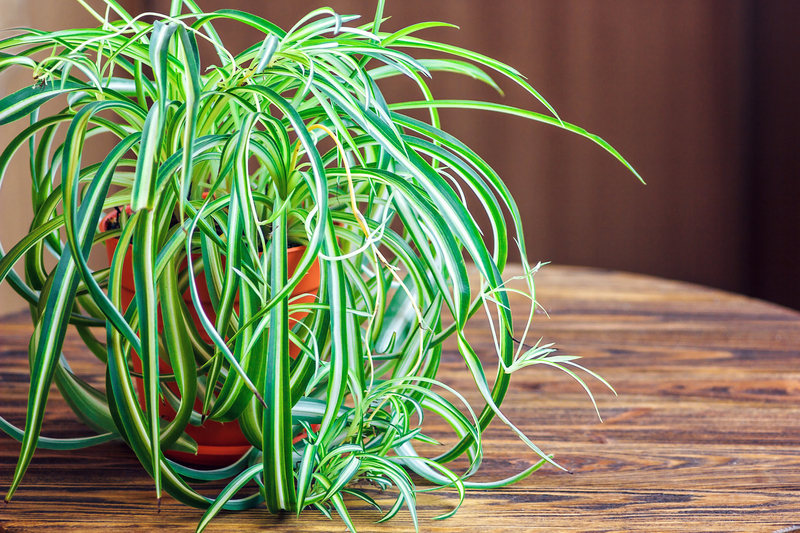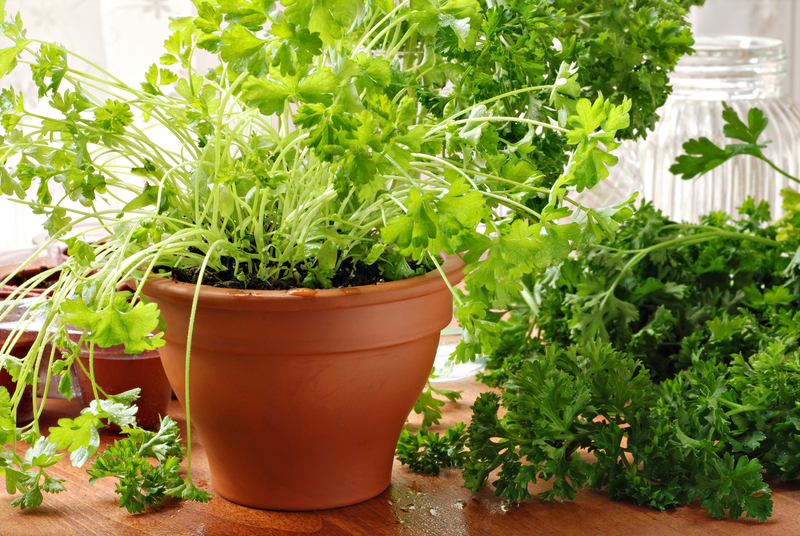Cold Season Gardening: Protect Your Plants Efficiently
Posted on 26/06/2025
Cold Season Gardening: Protect Your Plants Efficiently
As the temperatures drop and the frost starts to blanket the landscape, passionate gardeners may worry about the well-being of their beloved plants. Don't let cold weather dampen your green thumb! With thoughtful planning and techniques, cold season gardening can be hugely rewarding. In this article, we'll uncover the best strategies to protect your plants efficiently during the cold season, including expert tips, proven methods, and innovative ideas to help your garden thrive through winter.

Why Cold Season Gardening Matters
Many assume gardening stops when summer ends, but cold season gardening brings its own set of rewards and challenges. Winter months can support hardy crops, extend growing seasons, and offer unique beauty to your landscape. However, frosts, chilling winds, and unpredictable weather can put your plants at risk.
Efficient plant protection in the cold season means keeping your flora safe, healthy, and productive until the warmth returns. It's not only about survival - it's also about maximizing your winter harvests and preparing the groundwork for spring.
Common Threats to Plants in the Cold Season
Before diving into the solutions, let's understand what threatens your garden during colder months:
- Frost can damage leaves, stems, and fruits, particularly of tender plants.
- Freezing Temperatures can cause cells in plants to burst, leading to wilting and death.
- Winter Winds dry out soil and plant tissue, increasing stress on your garden.
- Heavy Snow and Ice may physically break branches and compact the soil.
- Reduced Sunlight slows growth and can contribute to plant decline if not managed properly.
Planning Your Cold Season Garden
Success begins with strategic planning. Proper plant selection, garden layout, and timing are essential for cold weather gardening. Here's how you can begin:
Choose the Right Plants
- Hardy Crops: Grow cold-tolerant vegetables like kale, spinach, Brussels sprouts, and carrots.
- Winter Annuals: Flowers such as pansies, violas, and ornamental cabbage add color and survive frost.
- Perennials and Shrubs: Select varieties with proven cold resistance appropriate to your USDA Plant Hardiness Zone.
Timing is Key
- Plant Early: Sow late summer or early fall to ensure root establishment before the first frost.
- Stagger Planting: Stagger sowing dates to spread harvests and reduce loss risk from sudden cold snaps.
Best Practices for Protecting Plants During the Cold Season
1. Mulching: Nature's Winter Blanket
Applying mulch is one of the most effective ways to protect your garden in the cold season. Mulch acts as insulation, regulating soil temperature and moisture.
- Types of Mulch: Use straw, shredded leaves, pine needles, or wood chips.
- How to Apply: Maintain a 2-4 inch thick layer around the root zone, being careful not to mound mulch directly against stems.
- Benefits: Mulch keeps soil from freezing and thawing repeatedly, which can disrupt roots and kill sensitive plants.
2. Row Covers and Frost Cloths
Lightweight fabric barriers can safeguard your plants from frost, wind, and occasional freezing temperatures.
- Floating Row Covers: Non-woven materials that let light and water in while keeping cold out.
- Frost Blankets: Thicker fabrics used during harsh cold snaps.
- Application: Secure the covers with stakes or weights and remove during mild spells to avoid overheating and encourage airflow.
3. Cold Frames and Cloches
For garden enthusiasts wishing to extend the season, cold frames and cloches are invaluable tools.
- Cold Frames: Bottomless boxes with a transparent lid (like old windows) placed over plants to trap solar heat.
- Cloches: Individual plant covers, often made from glass or plastic, perfect for shielding sensitive crops.
- DIY Tip: Repurpose plastic bottles or jugs as mini cloches by cutting off the bottom and placing them over young seedlings.
4. Greenhouses and Polytunnels
If you're serious about cold season gardening, investing in a greenhouse or polytunnel can offer year-round growing possibilities.
- Greenhouses: Provide controlled environments, ideal for a variety of crops and tender perennials.
- Polytunnels: Cheaper alternatives, excellent for extending growing seasons and protecting against wind and frost.
- Maintenance: Monitor humidity levels and provide adequate ventilation to reduce disease and mold risk.
5. Watering Wisely
Many overlook the importance of proper watering during cold weather.
- Hydration Matters: Dry soil freezes faster; well-watered roots can withstand cold better.
- When to Water: Water early in the day to avoid ice forming overnight.
- Don't Overwater: Excessive moisture can lead to root rot, especially in poorly draining soil.
6. Windbreaks and Physical Barriers
Wind strips away moisture and chills plants. Create protective barriers using:
- Fences: Install temporary or permanent fencing to block prevailing winds.
- Burlap Screens: Attach burlap to stakes for a quick, breathable shield.
- Hedges: Plant evergreen shrubs or trees as living windbreaks for future seasons.
Special Considerations for Container Gardening in Winter
Container plants are more vulnerable to cold because their roots are above ground and thus less insulated. Here's how to protect potted plants during the cold season:
- Move Indoors: Bring tender pots inside, or into a garage or shed when temperatures plummet.
- Insulate Containers: Wrap pots in bubble wrap, burlap, or even blankets. Cluster them together for mutual protection.
- Elevate Pots: Lift containers off the ground with pot feet to prevent freezing from the bottom up.
- Reduce Watering: Potted plants need less water in winter, but never let the soil dry out completely.
Choosing the Best Cold Season Protection for Different Types of Plants
- Annual Vegetables: Use row covers or cold frames for leafy greens or root vegetables.
- Perennials: Apply thick mulch and consider additional coverings for very young or vulnerable plants.
- Fruit Trees and Shrubs: Wrap trunks with tree guards to prevent frost cracking and rodent damage.
- Ornamental Plants: Use burlap or horticultural fleece, especially for evergreens focused on aesthetics.
Monitoring and Maintaining Your Cold Season Garden
Ongoing care is crucial for winter garden protection. Here are a few maintenance tips:
- Regular Inspection: Check covers, mulch, and barriers after storms or high winds.
- Prune Judiciously: Remove dead or damaged branches to avoid breakage from snow or ice.
- Watch for Pests: Rodents and insects may seek warmth in mulched areas - monitor and take action if necessary.
- Remove Heavy Snow: Gently brush snow off branches and covers to prevent breakage and collapse.
Innovative Techniques to Enhance Cold Season Plant Protection
- Heat Retention: Place water-filled plastic jugs in cold frames to absorb solar heat during the day and release it at night.
- Solarization: Lay clear plastic over garden beds in early spring to warm soil and accelerate growth.
- Thermal Mass: Use rocks or stone walls near planting beds to radiate stored heat overnight.
- DIY Greenhouses: Simple hoop houses made of PVC and plastic sheeting can be lifesavers for budget-conscious gardeners.
Preparing for Spring: The Benefits of Cold Season Gardening
Many benefits await those who garden throughout the cold season:
- Practice and Experience: Gain deeper knowledge about your plants' needs and behaviors.
- Extended Harvests: Enjoy winter crops like spinach, kale, and leeks when others have bare gardens.
- Spring Readiness: Well-protected beds thaw faster and are ready for planting weeks earlier.
- Improved Soil Health: Continuous mulching and cover crop use prevent erosion and add nutrients.

Frequently Asked Questions About Cold Season Gardening
1. What is the lowest temperature most useful garden plants can tolerate?
Most cool-season vegetables withstand light frosts (28-32°F / -2-0°C). Some, like kale and spinach, even improve in flavor with frost. Tender plants, however, need protection below 40°F (4°C).
2. Can you start seeds in winter for an early spring harvest?
Absolutely! Use greenhouses, cold frames, or even sunny windowsills to start seeds indoors and transplant when temperatures rise.
3. How can urban gardeners protect plants on balconies or rooftops?
Urban cold season gardening benefits from portable containers, windbreaks such as screens or panels, and readily available indoor shelter for small pots.
4. What mistakes should gardeners avoid in cold weather?
- Neglecting regular checks for damaged covers or waterlogged soil.
- Using thick plastic without ventilation, which can cause plant rot on sunny days.
- Over-fertilizing in winter; plants grow slowly and require fewer nutrients.
Conclusion: Cultivate Success with Efficient Cold Season Plant Protection
For more information and inspiration, bookmark this comprehensive guide and share your cold season gardening successes in the comments below. Happy gardening!

